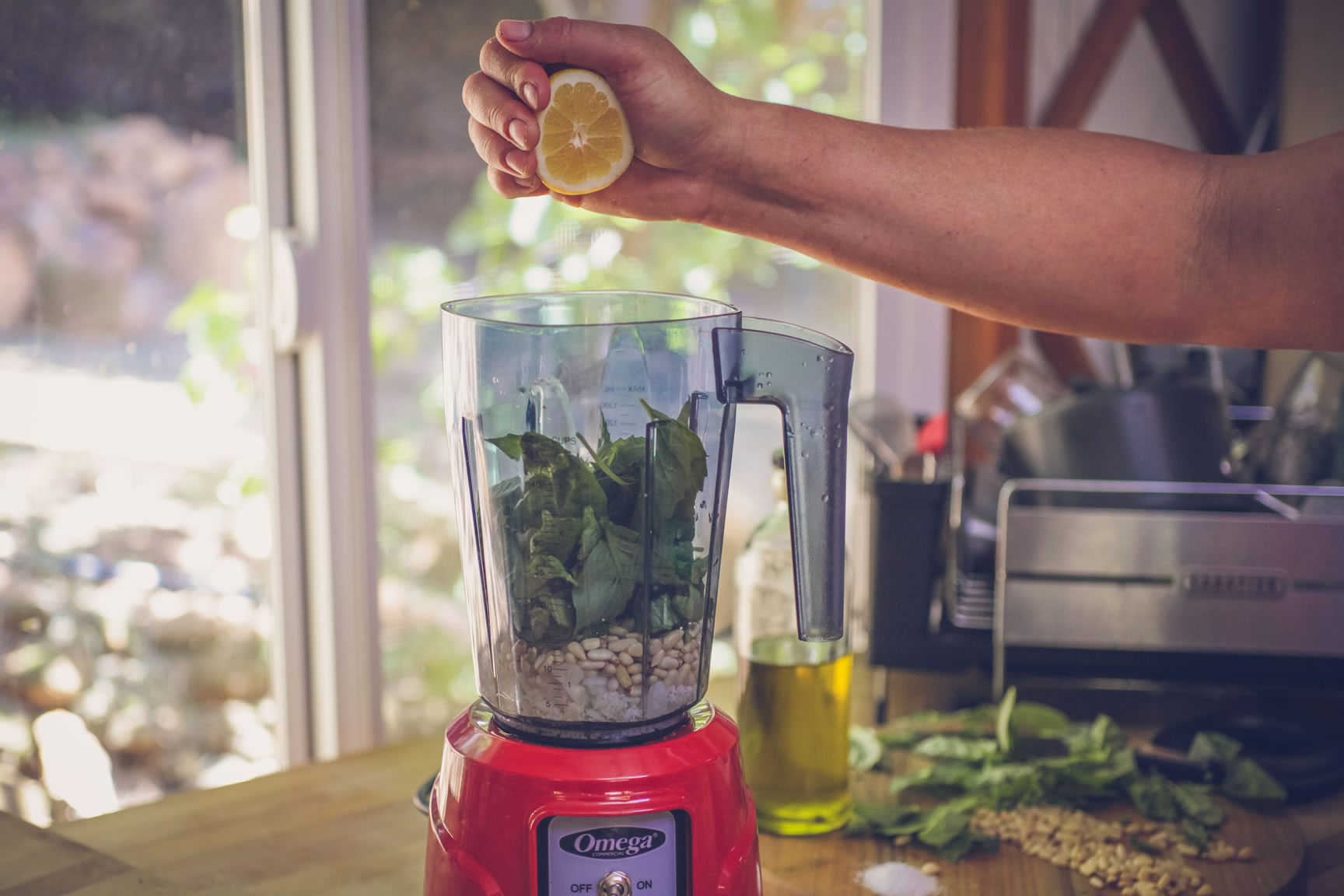- Continue Shopping
- Your Cart is Empty
Basil Pesto

What You'll Need
Equipment:
- high speed blender or food processor
Ingredients:
- 3 packed cups fresh basil leaves, no stems
- 3/4 cup grated parmesan cheese
- 1/2 cup olive oil
- 1/4 cup pine nuts
- 3-4 cloves garlic, minced
- 1/4 -1/2 teaspoon salt
- freshly ground black pepper to taste (optional)
Vibrant and green, almost glowing with piquant, concentrated flavors, each powerful element becomes more than itself when blended with the others. Fresh basil and garlic, rounded out by sharp cheese, textured by the oily nuts, and sharpened by a squeeze of lemon, pesto is an example of how sometimes the simplest concoctions are the most satisfying. And nothing will make your kitchen smell as amazing as a fresh batch of pesto!
Of course, it can be made with other vegetable, nut, oil and cheese combinations, too. Try walnuts or sunflower seeds in place of the more expensive pine nuts, or parsley, arugula, lemon balm, kale or mint to sub for the basil; each of these ingredients brings it’s own unique flavor to the dish. While basil and pine nuts are the most well-known for a reason (so delicious!) “pesto” actually refers to any blend of herbs, nuts, cheese and oil.
This recipe makes about 2 1/2 to 3 cups.
Directions:
Pack the clean, washed basil leaves, pine nuts, grated parmesean and garlic into a blender along with the salt and pepper if you choose to add it.
Pour the olive oil and lemon juice over the mixture to help it blend. Process in the blender or food processor adding more lemon juice or olive oil if necessary to bring the recipe to a uniform paste.

Pro tip! After scraping the pesto out of the blender, there will likely be some pesto trapped in the crevices of the blender. Add some more oil, perhaps some vinegar or lemon juice, and blend again! Makes a lovely salad dressing, and gleans the last bits of pesto flavor into usable form.
To serve, toss with warm, drained pasta for 6-8 servings, or spread it on pizza in lieu of red sauce. Can be stored in the freezer for up to a year.

A note on storage and preservation: Pesto is one of the few foods that we do not recommend canning in any form; because of the cheese and nuts it contains, and a relatively low acidity, it cannot be safely water-bath canned. Experiments in pressure canning left us with a brownish color, tasting so much less than what went into the jar, that we decided to allocate freezer space to it rather than attempt any other form of preservation. We are so lucky to live in an age of refrigeration! Pesto is truly at it’s green best when raw and uncooked. Freeze it in thin, flat packages; a freezer safe ziplock bag, or vacuum seal bags work quite well. Freezing in thin packages rather than deeper containers allows for rapid thawing and efficient use of freezer space.
OVER TO YOU
It’s part of our mission here at Mountain Feed to help you make delicious, sustainable, homemade food more often. Stop by and say hello on Facebook, Twitter, Instagram or Pinterest. Or, as always, you can do it the old fashioned way and come by the store to speak with one of our in-house experts.
